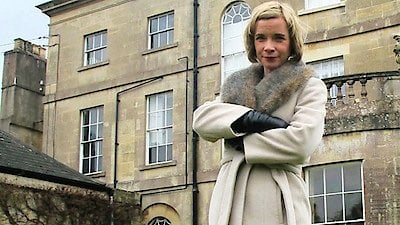In this episode of A Very British Murder with Lucy Worsley, titled "Detection Most Ingenious," the focus is on the development of forensic science and crime investigation methods.
Lucy takes the audience on a journey through time, starting in the early 19th century when there were very few crime-solving techniques available. She explains how the emergence of the detective story genre allowed fictional detectives like Sherlock Holmes to inspire real-life investigators, like Arthur Conan Doyle himself who helped solve a real-life crime.
We also see how the police started to develop more sophisticated investigation techniques, based on scientific evidence. One such innovation is fingerprinting, which was developed by Sir Edward Henry in the late 19th century. The audience is taken through the fascinating history of how the technique was discovered, developed, and perfected by detectives. The story is brought to life with dramatizations of real cases where fingerprint evidence played a key role in solving the crime.
The show then moves on to explore the mystery surrounding a notorious poisoner, Dr. Thomas Neill Cream, who was responsible for at least ten murders in the late 1800s. Through his case, Lucy explains how a combination of forensic science and detective work was used to track down a killer with no apparent motive. The audience is given an insight into the parallels between the fictional detectives of the time and their real-life counterparts, who often used their powers of deduction to solve complex cases.
Next up, we see how advances in forensic science allowed investigators to solve the case of a woman, Louie Calvert, who was brutally murdered in her bed in 1912. The show describes how forensic examination of the victim's clothes and the crime scene shed light on the sequence of events, leading to the conviction of her husband, who was the prime suspect.
Throughout the episode, we learn about the key breakthroughs in forensic science and detective work that enabled investigators to solve some of the most notorious crimes in British history. We see how techniques such as blood analysis, ballistics, and handwriting analysis were developed and refined, leading to a more scientific and meticulous approach to investigation.
The show also highlights the important role played by ordinary people in solving crimes, as Lucy recounts stories of how witnesses and victims helped to bring criminals to justice. One such case is that of Kitty Marion, a suffragette who was jailed for throwing a rock at a politician's car, and subsequently became a key witness in the trial of a man accused of a brutal murder.
Overall, A Very British Murder with Lucy Worsley is an entertaining and informative look at the history of crime and detection. This episode, "Detection Most Ingenious," provides a fascinating insight into the development of forensic science and detective work, and how it helped to solve some of the most notorious crimes in British history.
-
CastLucy WorsleySimon CallowKate SummerscaleMatthew Sweet
-
Channel
-
First AiredSeptember 30, 2013
-
Runtime50 min
-
LanguageEnglish

-
 Watch thousands of shows and movies
Watch thousands of shows and movies
-
 All the TV You Love
All the TV You Love
-
 Watch Anytime, Anywhere
Watch Anytime, Anywhere


 Watch thousands of shows and movies
Watch thousands of shows and movies
 All the TV You Love
All the TV You Love
 Watch Anytime, Anywhere
Watch Anytime, Anywhere




